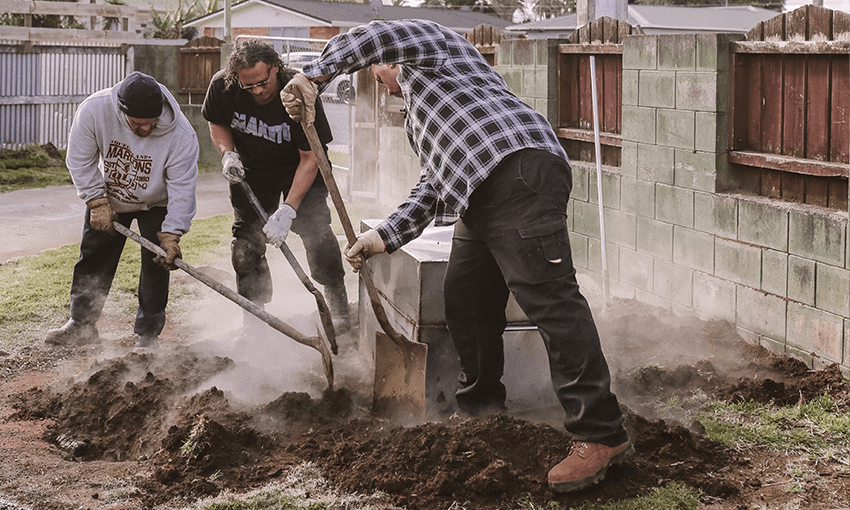When we think of Māori cuisine, hāngi is likely one of the first foods that comes to mind. In this Doc Edge short, we’re invited into the home and garden of a whānau using the hāngi to keep their bond and traditions strong.
Koro’s Hāngi featured in the Doc Edge Film Festival 2020 programme.
Making a hāngi takes more than five hours from start to finish. But in just eight minutes, the documentary Koro’s Hāngi gives us an involved look into the entire process.
Directed by Gianni Āro-Reid and produced by Danni Liang as part of their third year AUT project in 2019, Koro’s Hāngi is a study of hāngi and the way it represents wider Māori concepts like whānau, whanaungatanga and manaakitanga.
The film is an intimate first-hand account of Āro-Reid’s own aunties, uncles, grandparents, cousins preparing their annual hāngi, from digging the pit to peeling the vegetables, to the karakia before sitting down to eat. It’s a cooking method that has been perfected by Arō-Reid’s koro Neil, who has been putting hāngi down for decades – a skill he learnt growing up through observing and learning the process at whānau Christmas gatherings in Maketu. These days they’re made in the garden of his home in Manurewa, South Auckland.
Tangata whenua have been using hāngi to cook vegetables, meat and seafood for centuries. Ancestrally, it links us to our cousins across the Pacific who use the ground as an oven in the same way, be it lovo in Fiji, umu in Sāmoa, ahima’a in Tahiti or imu in Hawai’i.
Post-colonial adaptations have meant the leaves and bark originally used to hold and cover food have now largely been replaced by sacks, cloth and wire baskets. Still, the hāngi endures as a quintessential feature of Māori cuisine.
To make a documentary about hāngi is also to make a documentary about whānau and whanaungatanga. Hāngi is unique in that it isn’t a dish you can cook for one – it’s a dish for extended whānau groups or more. Unique in its scale, hāngi demands almost as many hands to make as it does mouths to eat it.
Koro’s Hāngi welcomes you in close, so much so that you can almost smell the mānuka smoke. For those eight minutes you’re nested among the whole operation, one which has been fine-tuned as knowledge has been passed down from generation to generation.
It’s nearly impossible to imitate the smokey, earthiness of a proper hāngi without this laborious process of digging, lowering, covering and lifting that is captured in the documentary. “It’s about connections,” one of Aro-Reid’s whānau says in the documentary. Rituals like making hāngi together are tools we can use to maintain connections with whānau and tupuna and to create new connections as whānau grow and change.
Ko te kai mea e whakapiri ai tatou – food is the ingredient that binds us together.
Doc Edge Film Festival 2021 runs from June 3 to July 11 in Auckland, Wellington and online. For full programme and ticket information visit docedge.nz
The Doc Edge Forum Online is an industry conference of seminars, panel discussions, masterclasses and networking opportunities held between May 27-31. Find out more at docedge.nz/industry/forum-2021/





